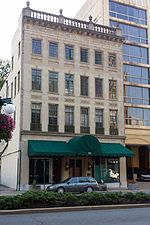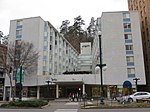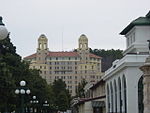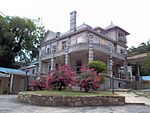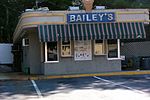Hill Wheatley Downtowner Motor Inn
Buildings and structures in Hot Springs, ArkansasGarland County, Arkansas Registered Historic Place stubsHistoric district contributing properties in ArkansasHotel buildings on the National Register of Historic Places in ArkansasNational Register of Historic Places in Hot Springs, Arkansas ... and 1 more
Use mdy dates from August 2023

The Hill Wheatley Downtowner Motor Inn is a historic hotel at 135 Central Avenue in Hot Springs, Arkansas. It is a ten-story rectangular structure, finished in glass, brick, and metal, in the Mid-Century Modern style. Its main block is set back from the street, behind a two-story entry retail section. The tower is fronted mainly by balconies with panels of redwood screening to provide visual relief and shade. The hotel was designed in 1965 by Noland Blass Jr. for Hill Wheatley, one of Hot Springs' major promoters. It is one of the only surviving hotels in the city with its own bathhouse.The property was listed on the National Register of Historic Places in 2016.
Excerpt from the Wikipedia article Hill Wheatley Downtowner Motor Inn (License: CC BY-SA 3.0, Authors, Images).Hill Wheatley Downtowner Motor Inn
Central Avenue, Hot Springs
Geographical coordinates (GPS) Address Nearby Places Show on map
Geographical coordinates (GPS)
| Latitude | Longitude |
|---|---|
| N 34.517777777778 ° | E -93.055 ° |
Address
Mountain Valley Water
Central Avenue
71901 Hot Springs
Arkansas, United States
Open on Google Maps
